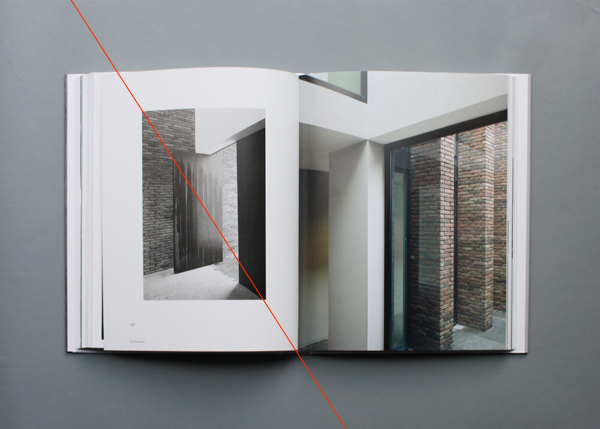
There are images of interiors that prompt you to silently utter with great yearning: "If only I lived there!": silent, harmonious, almost empty rooms in which life is no doubt just as tidy, cultivated and focused on the essentials. Only a very few choice objects, in perfect balance with one another, seem to enrich this meditative life and you repeatedly ask yourself whether some photographer has simply staged these spaces or whether the inhabitants of these rooms really do manage to consistently banish from their living space all the trappings of life, be it fragrance flacons, magazines, postcards, mementoes, or those "funny" souvenirs - and why you don't manage to emulate them. Architects such as John Pawson and Vincent van Duysen are among the masters of modern Minimalism, who succeed in making this reduction not seem dogmatic and hell-bent on asceticism, but give it a credible and elegant face. While John Pawson has announced his mission in countless books, the oeuvre of Belgian Vincent van Duysen has only recently been exhaustively outlined in book form - in "Complete Works", which brings together over 30 Van Duysen projects from 1993 to today, all of them described in detaiul with photos and plans. Born in 1962, Vincent Van Duysen studied Architecture in Ghent, worked in Milan in the 1980s together with fashion and interior designer Cinzia Ruggeri and Memphis co-founder Aldo Cibic, before setting up his own architecture firm in Antwerp in 1990. Over the last few decades, he has realized architecture and interior design projects primarily in Belgium, but also in Hamburg, Paris, Dubai, Milan, Mallorca, New York and Tokyo. They are striking private homes, office complexes, spacious townhouses and urban residences, elegant stores and customized luxurious apartments, all of them created in close cooperation with clients and specialized craftsmen alike. For what tend to be luxury projects, Van Duysen conjures up silent, precise and duly elegant shapes, often borrowing from Classical Modernism in the process. Yet he also breaks with that traditions proverbial coldness by opting for brick walls, travertine stone, or untreated wooden floors, without this ever degenerating in any way into decorative kitsch. In other words, he stands firmly in the great tradition of elegant Modernism, such as is to be found in the work of Mies van der Rohe. In the introduction to "Vincent Van Duysen: Complete Works", architectural critic Marc Dubois draws a line from the influences on Van Duysen's oeuvre back in the 1980s, via his first major projects for private homes through to his latest undertakings. He places Van Duysen in the context of Belgian architectural traditions and shows the links to the work of Victor Horta, Le Corbusier, Adolf Loos and Mies van der Rohe, not to mention contemporary designers such as Maarten van Severen. In the projects section, in-between the designs presented there are repeatedly statements by companions, business partners, or designers such as Patricia Urquiola and Ann Demeulemeester, emphasizing the character of simplicity in Van Duysen's work, his feel for details and materials, and the way he combines these with clear, contemporary forms. Often, the Belgian is mistaken for an interior designer - after all, he is known in the designer community above all for his archaic vessels for "When Objects Work" and his straight-edged furniture designs for Poliform, Bulo, B&B and Tribù. Yet Van Duysen is definitely an architect who is interested in creating rooms and thus pays as much attention to materials and details as he does to the overall architectural impression. Ilse Crawford, the former editor-in-chief of Elle Decoration in Britain, states in her foreword that it is above all Van Duysen's ability to combine the formal language of Modernism with an intuitive feel for materials that makes his work so special and why once you have seen one of the Belgian's houses from the inside you are not likely to forget it: "By the end you are not just impressed by the beauty of the spaces, but also by the memory of the details and the feeling of the materials, and it is the latter that stays with you." So it is a shame that the choice of images in the book does not always reflect this. Often, less attention is paid to the details and materials than to the sort of spectacular photos you would associate with a coffee-table book. Nevertheless, the book is a marvelous source of inspiration, an overview of the oeuvre of an architect who does not waver form his course, who is willing to become an interior designer, who eschews dramatic effects and instead is a virtuosos of materials, textures, shapes and proportions, along the way creating persuasive designs down to the very last details. The book conveys this search for intense, simple and authentic solutions and offers an insight into his minimalist spaces, and they fill us so with yearning as these are no stagings bereft of all soul. Instead, they are elegant unpretentious rooms with a strong character of their own, places whose inhabitants we would all no doubt like to meet - if only in order to ask them where they hide all their everyday objects. Perhaps each of them has a second apartment, crammed full of stuff? Vincent Van Duysen: Complete Works
With a foreword by Ilse Crawford and an introduction by Marc Dubois
Hardback, 288 pages, 382 illustrations
Thames & Hudson, 2010
EUR 51.99



















